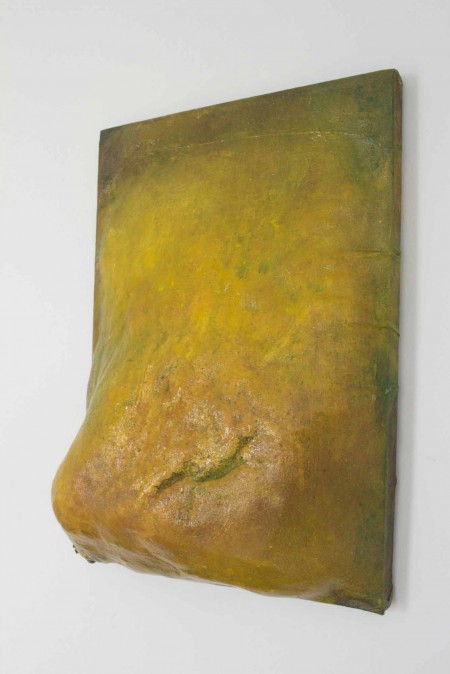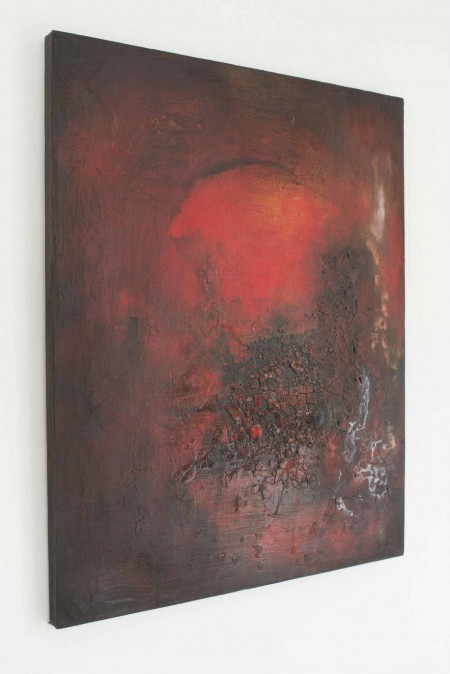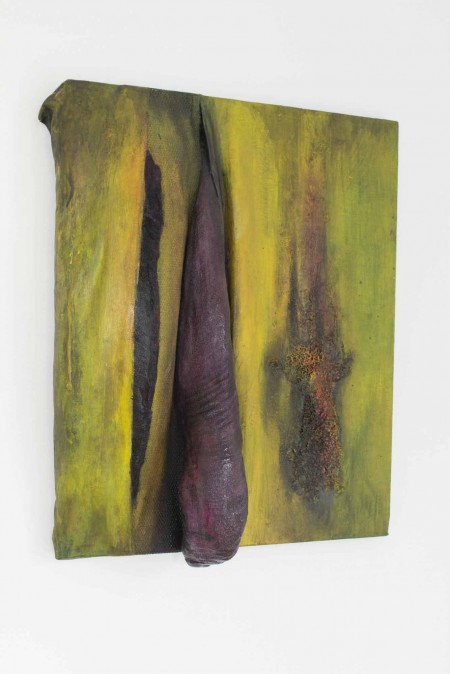“Art begins with resistance–at the point where resistance is overcome. No human masterpiece has ever been created without great labor.”
– Andre Gide
The life of an artist requires discipline, determination, and the willingness to fail. More so, it requires a level of perseverance that can become increasingly difficult to sustain when life itself becomes so overwhelming that even the most mundane of tasks begin to consume all of one’s capacity for endurance.
Fortunately, there are those who refuse to surrender and whose work keeps us inspired. Take Erica Rawlings, an emerging Los Angeles-based artist whose newest body of work oozes with uncompromising passion and a revelation of uninhibited raw emotion.
As a child, Rawlings struggled with the idea of the artist’s path. Today, however, she believes “that there is more to the artist’s role than can be casually described.” This she attributes to a series of hardships that she’s experienced over the years. “Now I have no problem admitting that I am an artist,” she asserts. “I have rightfully earned the right to be unreliable, moody and full of useless insights. At this point, I would be hard pressed to find any other single word to describe myself other than — artist.”

Rawlings’ pursuit of art was touch and go from the beginning. In grade school, she confides that she “wasn’t into drawing or painting but more so consumed with the layout and lighting of [her] personal space.” As a way to cope with frequent episodes of anxiety, so recurrent that she developed stomach ulcers before her eighth birthday, she “became increasingly fascinated by the way that places made [her] feel.” She recalls, “I made blackout curtains out of bedspreads and fashioned tents in the living room out of sheets and chairs. One time I hung plastic fish on threads from the ceiling so that I could transform my bedroom into an aquarium.”
The first time Rawlings recognized that her unique perspective could be an asset was when she was in the fifth grade. Rawlings had a teacher whom she admired: an expressive woman who didn’t adhere to societal norms or expectations. Rather, she was quite the opposite: expressively bold, sincerely honest, and always unapologetic. In Rawlings’ words, “it was she who helped me understand that artists don’t have to be encumbered by rigid roles and that the unique was good.”
The other event in Rawlings’ youth that inspired her to pursue a creative life was the divorce of her parents. She was thirteen at the time and, in an attempt to cope, she began to “look at the act of creating as a healing ritual.”

To this day, Rawlings continues to channel her work as a means to confront emotions and challenges, which she feels she could not otherwise overcome. Creating is the one thing that has helped her move through depression, overcome heroin addiction, and work through the unexpected death of her mother at an early age. “My ongoing struggles,” she explains, “have forced me to find something that can sustain me, something unique that isn’t likely to disappear on me. By creating a memento of a moment or period of time, I’ve found that I can let what has happened rest and just be.”
While Rawlings cultivated an awareness that informs much of her practice, her current work reveals that she has hit a heightened level of insight. When Rawlings earned her undergraduate degree from Cal Arts in 2001, she had yet to discover a definitive style. This, in part, was due to the fact that she’d been undergoing treatment for a series of benign brain tumors, which she had to have surgically removed. “Dealing with my treatment, the surgeries, the radiation, and my recovery derailed any hopes of becoming an art star,” Rawlings admits. “Instead, I retreated, or rather, never really engaged. I didn’t bother going to openings and making connections. I didn’t have the energy to make use of the network I could have fostered from being a Cal Arts alum.”
Since, Rawlings has often had to struggle to make ends meet. Hovering at the poverty level, she once even “tried to quit being an artist but felt more miserable than ever” because, in her words, “making art is one of the few things I can put my full faith and loyalty into.”
Her prospects improved last year when she found work as an art instructor. She mentored troubled teenagers and, after two semesters, made a decision. She concluded, “I’d better start taking my own advice. By asking my students to use art as path of self-discovery, I saw that I had my own work to do. That’s when I challenged myself to stop wasting time and start building a body of work that I could stand behind.”

Rawlings’ newest series, comprising more than thirty distinct pieces, glistens with a seemingly sinister yet unexpected grandeur, revealing life’s upsets and imperfections, marred by blemishes reminiscent of old scars.
Like an unborn child, Amber Unadvantage’s (2016) lower half projects outward yet is stretched taught over what appears to be a tumorous growth, a detail Rawlings’ achieved by stretching the canvas with an array of fillers, such as poly fiber foam. By adding, removing, scratching, and burnishing rock salt, sand, glue and spackle onto the painting’s surface, Rawlings was able to give the work’s protrusion an infectious appearance composed of knots, nodules, depressions, and craters that collectively speak to our innermost pains.
Rawlings is known for working with painted canvases that she finds at thrift shops or estate sales. Not only are they much more affordable than freshly stretched canvases, but they offer her an additional layer to build off. In Right Heavy Beef (2016) she applied layers of acrylic paint along with spackle, which she worked repetitively while integrating pieces of quartz crystal marble and fragments of metal. Like Amber Unadvantage, the painting evokes a neglected wound. Against haunting hues of crimson and mahogany, red and black chips cluster like an old scab that has been peeled and debrided, arresting the healing process.
“As objects,” Rawlings says, “my paintings are self-possessed and sad. They are resigned to their asymmetry and abstracted pain. In their frozen states, they embody a moment of bravery, a pause between moments of suffering.” Even though Rawlings’ work reflects feelings of grief and sorrow, it also resounds with an unbridled resilience. An evocative piece, Constraint, Gravity, Debridement (2016) is one of her most sculptural works to date. Before starting the piece, Rawlings removed the original canvas from its frame and replaced it with a larger one that she attached loosely so that she could manipulate its shape. The process created loose folds and crevices from which one long, purple appendage resembling a wild root protrudes out and downward. Needless to say, the painting embodies physical qualities that bring to mind maladies of the body. Yet, in this particular work, the cause of the malady—and the root of its pain—is instead fully exposed.
Although Rawlings feels that “the metamorphosis of an experience into an artwork is never a perfect birth,” her work suggests that transformation is not only possible but imperative. This is because the viewer cannot help but to experience the span of emotions that Rawlings has transcended throughout her life. Engaging, eerie, odd and also beautiful, they aren’t only revealing of Rawlings’ deepest secrets, but this newest collection is emblematic of her journey towards reconciliation and perhaps true acceptance of self.
–Anise Stevens
Wonderful absorbing work Erica!! Fantastic descriptions and so insightful, Anise.. Thank you!
A major talent. Erica’s slices on life can also be pithy and memorable combos of images and Word Play.